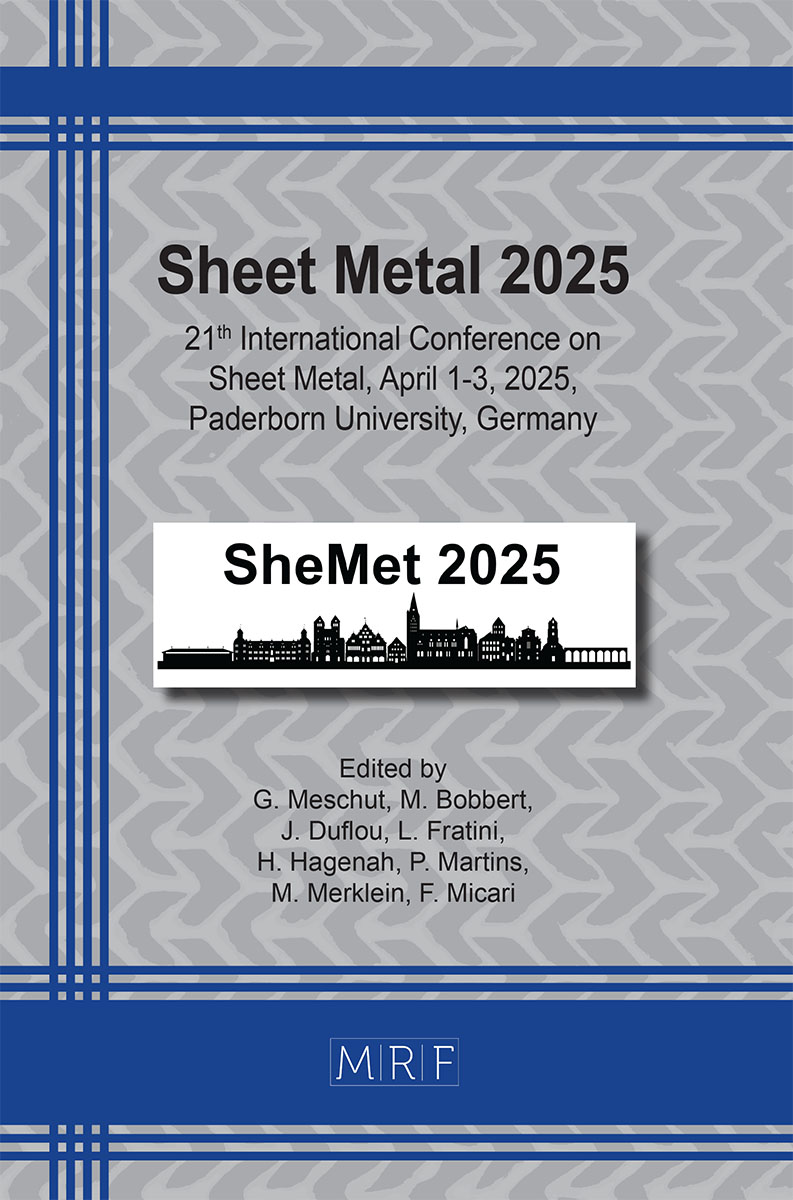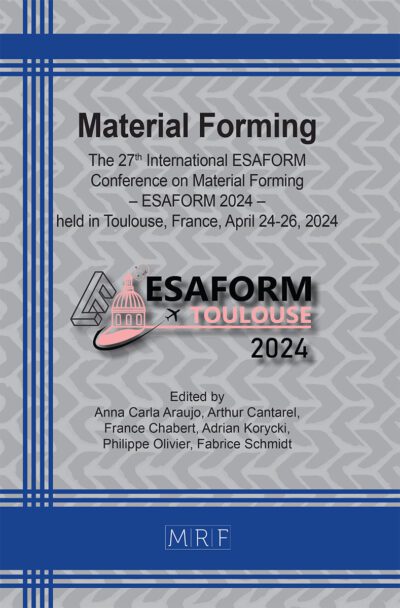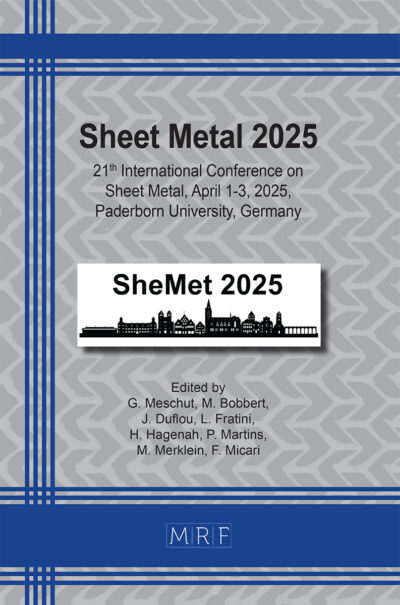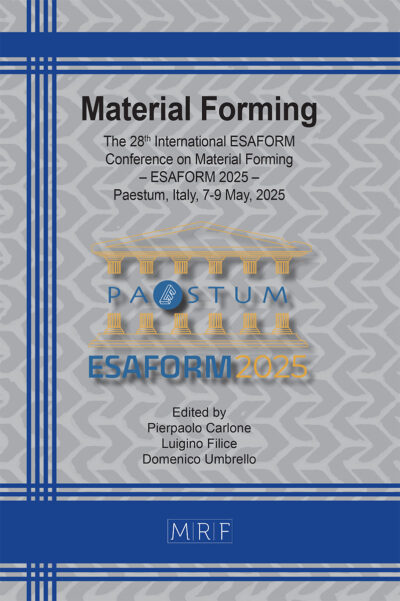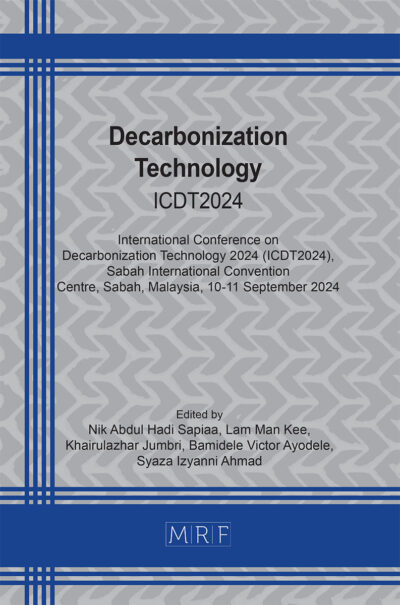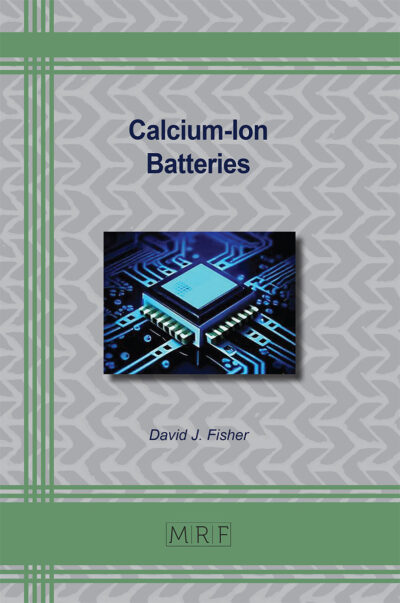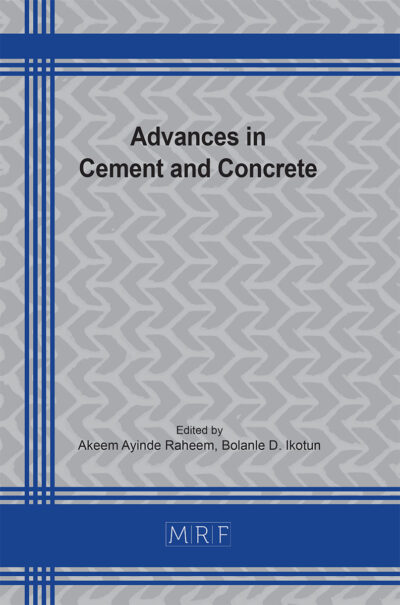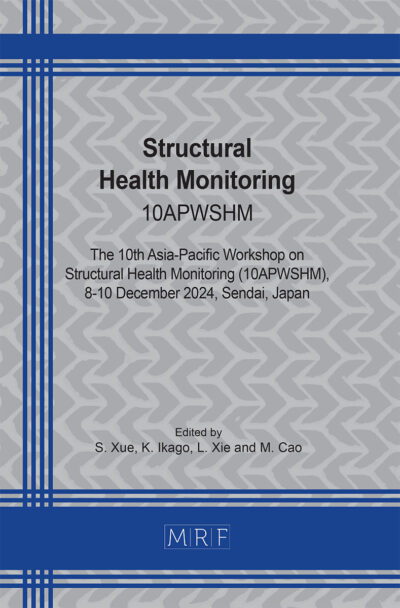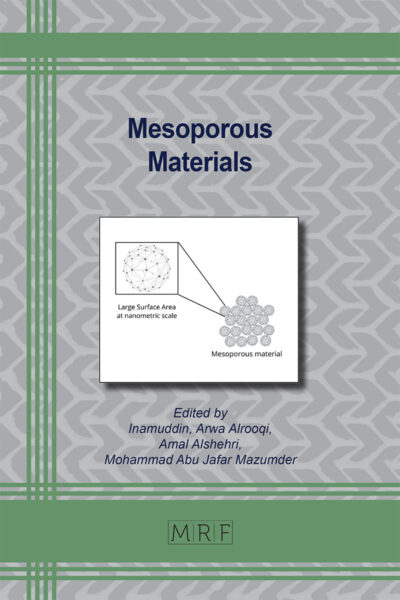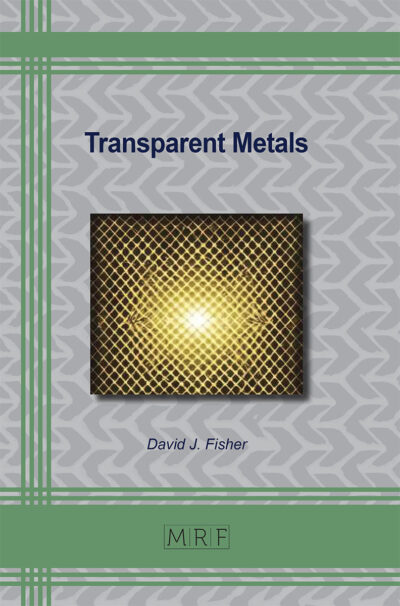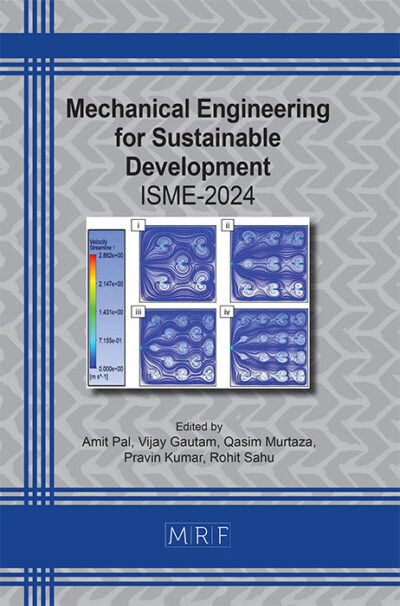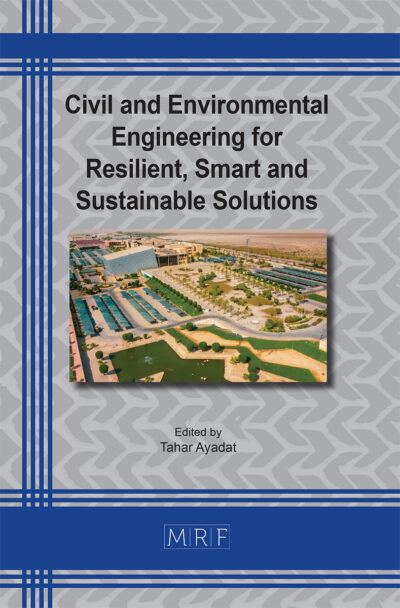Folding pre-shaped blanks
David Evans, Julian M. Allwood
Abstract. Deep drawing creates top-hat-shaped components. Some geometries are difficult to form using deep drawing but can be achieved by folding a top hat into another shape. Previous literature has explained the rules governing the folding of sheets but has not applied these rules to the folding of square top-hat-shaped components. This paper derives the equations governing the geometry of a quarter-top-hat and categorises the family of shapes which can be folded from it by changing the orientation of its creases. Any geometry within this family can be described by a point in a three-dimensional configuration space; this paper identifies the feasible region within this space and shows visually how the geometry of the quarter-top-hat changes as it is folded along three distinct trajectories in the feasible region.
Keywords
Deep Drawing, Folding, Geometry
Published online 4/1/2025, 8 pages
Copyright © 2025 by the author(s)
Published under license by Materials Research Forum LLC., Millersville PA, USA
Citation: David Evans, Julian M. Allwood, Folding pre-shaped blanks, Materials Research Proceedings, Vol. 52, pp 2-9, 2025
DOI: https://doi.org/10.21741/9781644903551-1
The article was published as article 1 of the book Sheet Metal 2025
![]() Content from this work may be used under the terms of the Creative Commons Attribution 3.0 license. Any further distribution of this work must maintain attribution to the author(s) and the title of the work, journal citation and DOI.
Content from this work may be used under the terms of the Creative Commons Attribution 3.0 license. Any further distribution of this work must maintain attribution to the author(s) and the title of the work, journal citation and DOI.
References
[1] Danckert J. Experimental investigation of a square-cup deep-drawing process. Journal of Materials Processing Technology. 1995 Mar 1;50(1):375–84. https://doi.org/10.1016/0924-0136(94)01399-L
[2] Cleaver CJ, Arora R, Loukaides EG, Allwood JM. Producing isolated shrink corners by folding-shearing. CIRP Annals. 2022;71(1):217–20. https://doi.org/10.1016/j.cirp.2022.03.036
[3] Hull T. Origami. In: Selin H, editor. Encyclopaedia of the History of Science, Technology, and Medicine in Non-Western Cultures. Dordrecht: Springer Netherlands; 2016. p. 3457–60. https://doi.org/10.1007/978-94-007-7747-7_8818
[4] Demaine ED, O’Rourke J. Geometric folding algorithms: linkages, origami, polyhedra. Cambridge; New York: Cambridge University Press; 2007. 472 p. https://doi.org/10.1017/CBO9780511735172
[5] Beloch MP. Sulla risoluzione dei problemi di terzo e quarto grado col metodo del ripiegamento della carta. Scritti matematici offerti a Luigi Berzolari. 1936.
[6] Kawasaki T. On the relation between mountain-creases and valley-creases of a flat origami. In: Proceedings of the First International Meeting of Origami Science and Technology, 1991.
[7] Kasahara K, Takahama T. Origami for the Connoisseur. Japan Publications; 1998.
[8] Abel Z, Cantarella J, Demaine ED, Eppstein D, Hull TC, Ku JS, et al. Rigid Origami Vertices: Conditions and Forcing Sets. 2015.
[9] Belcastro SM, Hull TC. Modelling the folding of paper into three dimensions using affine transformations. Linear Algebra and its Applications. 2002 Jun;348(1–3):273–82. https://doi.org/10.1016/S0024-3795(01)00608-5
[10] He Z, Guest SD. On rigid origami I: piecewise-planar paper with straight-line creases. Proceedings of the Royal Society A: Mathematical, Physical and Engineering Sciences. 2019 Dec 11;475(2232):20190215. https://doi.org/10.1098/rspa.2019.0215
[11] Miura K. A note on intrinsic geometry of origami. Research of pattern formation. 1989;91–102.
[12] Schenk M, Guest SD. Origami folding: A structural engineering approach. Origami. 2011;5:291–304.
[13] Liu KT, Paulino GH. Geometric mechanics of hybrid origami assemblies combining developable and non-developable patterns. Proceedings of the Royal Society A: Mathematical, Physical and Engineering Sciences. 2024 Jan 24;480(2282):20230716. https://doi.org/10.1098/rspa.2023.0716
[14] Tachi T. Generalization of rigid foldable quadrilateral mesh origami. Journal Of The International Association For Shell And Spatial Structures. 2009 Dec 1;50.
[15] He Z, Guest SD. On rigid origami II: quadrilateral creased papers. Proc R Soc A. 2020 May;476(2237):20200020. https://doi.org/10.1098/rspa.2020.0020
[16] Akitaya HA, Demaine ED, Horiyama T, Hull TC, Ku JS, Tachi T. Rigid Foldability is NP-Hard. 2020.

